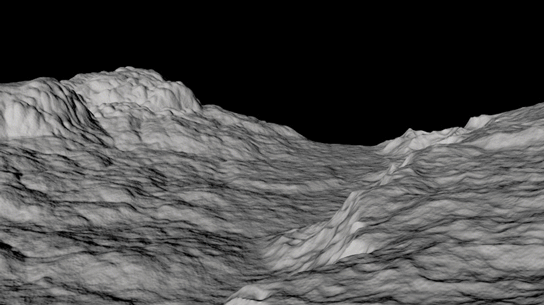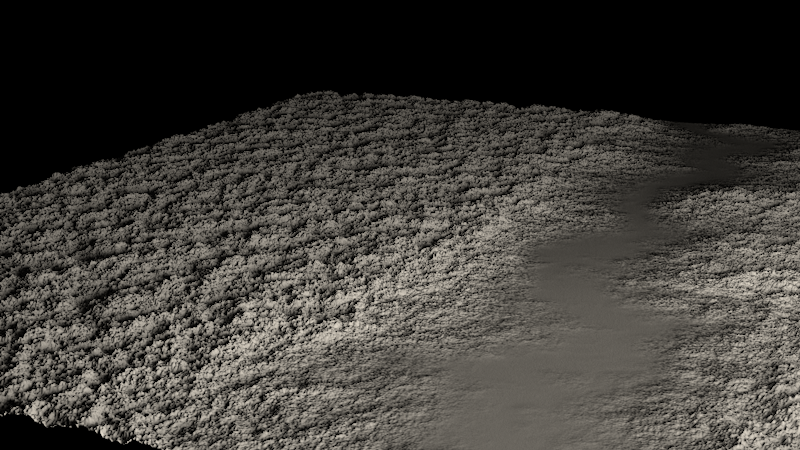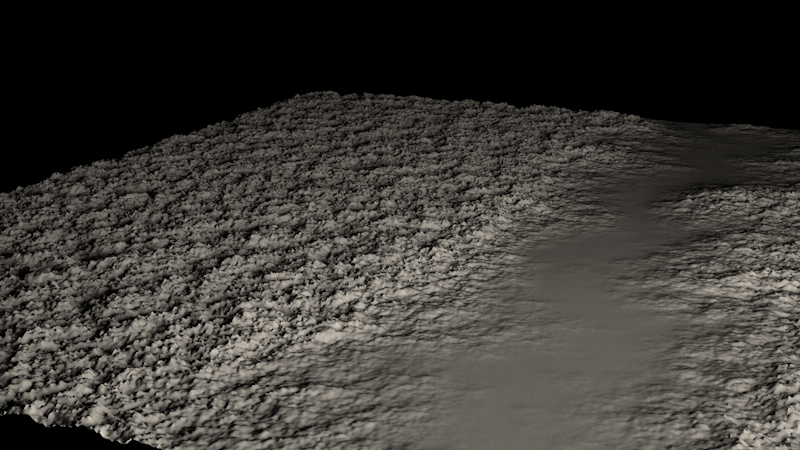Metachaos by Alessandro Bavari from 2010 has always been loitering in my mind since I first saw it way back many years ago. Visually it was very peculiar and odd, with its writhing bodies, shaky camera and mix of dark and light environments. While I had seen a number of odd videos before such Aphex Twin music videos, works by Chris Cunningham, Michel Gondry and other directors; something about Metachaos felt even more surreal. I think the fact that it was fully CG (or largely CG) helped push what was possible to “film” into this expanse of possible visuals without a concern for real world viability or even a large film budget to make it happen. Additionally, considering the year it was made, even now, I think the textures, lighting and camerawork (though low res) were and still are exceptional. Which brings me to what I intend to do. 8 years on, with technology advancing, I do strongly feel that it’s possible for me to recreate a fraction of what I saw in Metachaos. Not to say I’m attempting a recreation of its mood and visual style, but on a technical level.
Throwing back to the works of the aforementioned artists/directors, thinking about it now I’d say it was not that it was odd that really kept me around, but in the world building that making these fantastical scenarios brings about; likewise with Metachaos. Upfront these might just seem like kooky videos that last a couple of minutes but they appeal to me because they feel like they’re creating alternate worlds, akin to those of Tolkien’s Lord of the Rings universe though not as fleshed out in the same way.
Ultimately what I personally trying to do, is to bring that same kind of intensity and atmosphere of a world through to the viewer. I want the viewer to get a sense of the world, even from erratic snippets that are fleeting; which is why I gravitate strongly to the idea of having strong aesthetics and visuals for my shots. Thought this might be subjective, I personally feel that strong visuals give the viewer a mental branching off point for a variety of thoughts.
TESTING
I start out my foray into the project by jumping back in 3D software. Having done CG from 2010 – 2014 in my 3 year Digital Visual Effects course in Polytechnic, I figured it’s time to jump back in. This time though, I started with Cinema 4D rather than Maya, both of which I’ve used before in varying degrees. These next few shots are the visual tests I’ve attempted as a refresher into the software.
As a start I tried to recreate a decent rocky textured terrain as per a tutorial. The aim being to get realistic surfaces and decent lighting.

Surface Deformers and Lighting Tests
Also I wanted to try lighting with objects and get reflections of said objects on surfaces such as water. But I haven’t been able to figure out that last portion with the reflections yet.

Testing Lighting with Objects
Lastly I tried smaller scale surface tests. I could get decent render times utilizing sub-poly displacement but not on a larger scale on the size of landscapes without dramatic increases in render time.

Sub-poly Displacement (1 second per frame)

Render Time – 7 mins 28 Seconds (Subpoly Displacement)

Render Time – 15 seconds
These were tests into lighting, displacement and bump maps, and additionally optimizing renders, which is my main concern, the downtime induced by rendering; which is why I’ve also started contemplating using software such as Unity for this project.
Unity allows for real time interaction as well as lighting and rendering, which is very appealing, though, the downside for Unity at the moment is unfamiliarity, I’m definitely not as proficient at Unity as I am in 3D software. However, I’ve seen very stunning examples of visuals to come out of Unity, outside of game development such as the example below.
In doing these tests, I’ve stumbled upon a realization that, I’m not limited to one software for my final outcome, that is to say, I can utilize and draw on the even larger field of experience I have with other software, namely After Effects.

Slit-Scan
The gif above is the result of taking a render of the sphere rotation and utilizing a slit-scan technique through After Effects. The technique is essentially visual time displacement. Having tried this with live footage before, one of the shortcomings was that I didn’t have a smooth enough frame rate and caused banding (you’d see thick slices moving instead of a smooth displacement).
The benefit is that in 3D software I can increase the number of frames per second and render at a high frame rate (120 in this case). The downside being I’m rendering more frames = more render time and also additional rendering in After Effects.
Still finding my way though the software, optimizing the renders really feels like the make or break of this at the moment, being able to get fast feedback being the key at this iterative stage.
I’ll spend some time after this week looking into Unity as an option for both render and interactive reasons.
Additionally, I need to work on crafting good looking compositions or essentially the cinematography of the shots. Upon that I should also build a short storyboard for a sequence to test out camera movements and cuts.
In short + subsequent steps
- Crafting strong shots
- Creating a good sequence
- Exploring further technical aspects (motion blur, depth of field) both of which I’m currently doing tests for
- Sound Design
- Trying out Unity
- Final Execution look (multi-screen or other output)

 Prior to the assignment, we were asked to research on some artists. I chose Franz Kline as his artwork was the sort of Abstract art I grew up disliking cause I didn’t understand why it was so highly prized. For me, understanding the mindset and thoughts of the artist, helps me understand their artwork, and this was the perfect opportunity to do so.
Prior to the assignment, we were asked to research on some artists. I chose Franz Kline as his artwork was the sort of Abstract art I grew up disliking cause I didn’t understand why it was so highly prized. For me, understanding the mindset and thoughts of the artist, helps me understand their artwork, and this was the perfect opportunity to do so.






























